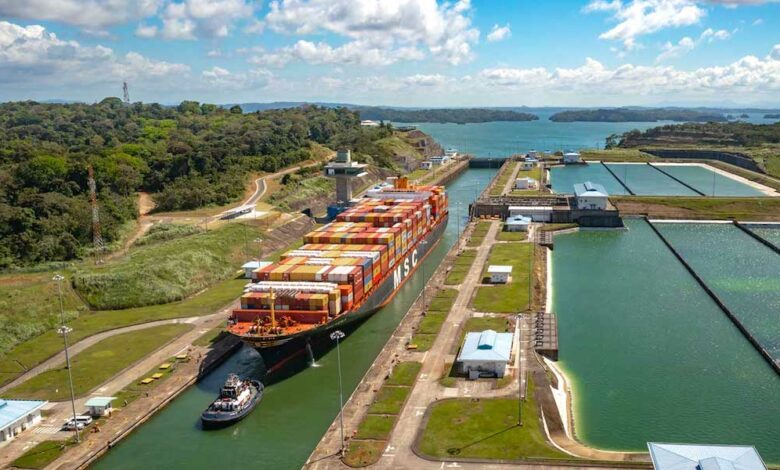
The Panama Canal, a vital conduit handling approximately 5% of global trade, may implement additional reductions in daily vessel transits should the current year’s drought persist, announced the canal’s administrator. A bottleneck of ships is awaiting passage through the trans-oceanic route, leading to restrictions on vessel draft and daily passage allocations in a bid to conserve water.
Presently, the canal permits a maximum of 30 – 32 ships to transit daily, a decrease from the usual 36, while the authorized vessel draft has been curtailed to 44 feet from 50. This has compelled many vessels to offload part of their cargo prior to passage, consequently driving up freight costs, especially in the run-up to the holiday shopping season.
In an effort to alleviate congestion, the canal recently revamped its reservation system, granting passage to more non-booked vessels and prioritizing those with the lengthiest wait times. As of Tuesday, the backlog had reduced to 116 vessels, down from over 160 in early August, with the maximum wait period now standing at 14 days, a drop from 21 days a month ago, as claimed by official data.
Ricaurte Vasquez, the head of the Panama Canal Authority, emphasized that any further reductions would initially target daily transits rather than authorized vessel drafts, recognizing the impact on shippers. While no passage restrictions are slated for this month, the budget for the upcoming fiscal year, starting in October, contemplates a potential cut to 30-31 daily transits.
Attributing the situation to an unusually severe El Niño weather pattern, Vasquez underscored the simultaneous high temperatures in both the Pacific and Atlantic Oceans. He warned of potential challenges in the coming months, in the absence of substantial rainfall.
While Vasquez asserted that a complete suspension of operations is not anticipated, he acknowledged the need for structural adjustments to secure adequate water for the canal’s operations. Currently consuming 50 million gallons (190 million liters) of fresh water per ship passage, plans are underway to create additional reservoirs. This ambitious endeavor, contingent on legislative amendments and congressional approval, could be open for bids as early as next year.
The alarm has been raised, over potential disruptions to maritime trade, particularly with a drier period looming in the upcoming year. The prospect of an early onset to Panama’s dry season, coupled with above-average temperatures, could accelerate evaporation rates, potentially culminating in historically low water levels by April
Water levels at Gatun Lake, the canal’s primary water source, have dwindled to 24.2 meters (79.7 feet) from the typical September average of 26.6 meters. Should the drought persist beyond a year, the canal might be compelled to revise its weather models, potentially leading to further restrictions.

